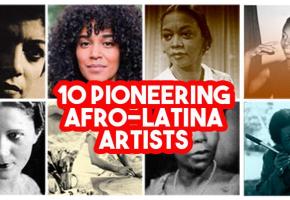I first heard about Manuela Saenz from a newspaper article whose title read ‘Bolivar’s heirs honour ‘harlot of Americas’. Now, that sounded intriguing!
The article spoke about ‘the most famous harlot of Americas’, Manuela Saenz, who lived and fought alongside the great liberator of the South American continent, Simon Bolivar. She died ostracized from her country and her people, for being one of his most ardent supporters.
As I read the story I found myself more and more absorbed. Forgotten in exile in northern Peru, she survived by selling tobacco and translating love letters to the whalers who stopped at the dusty port town. As a theatre-maker I was struck by its romantic theatricality (although in reality, terribly tragic). My imagination immediately took me to a stage filled with sand and a lone figure sitting on a wooden barrel. And a cigar, of course. No thought is complete without a smoking cigar.
The article continued: after 200 years she was being posthumously recognised and her symbolic remains were being taken to lie next to those of Simon Bolivar’s in Caracas, Venezuela. ‘We are going to unite the remains of our liberator with the remains of his immortal companion’.
I wondered why this was being done now? Why was she so forgotten? Was she really a harlot, or just a woman battling against a strong patriarchal society? What was there to learn from this historical figure?
So I went to find her. I travelled for six weeks around Colombia, Ecuador and Peru – following the footsteps she made whilst she was alive and seeing the imprint she left on generations of Latin Americans.
[[{"type":"media","view_mode":"media_large","fid":"3080","attributes":{"alt":"","class":"media-image","height":"250","typeof":"foaf:Image","width":"300"}}]]
A journey through Latin American independence
In Bogotá I visited Manuela’s house, which was cleverly situated down the road from the Palacio San Carlos where Bolivar resided so she could keep a close eye on him. I strolled the gardens of the Quinta de Bolivar and imagined her walking arm in arm with Simón as they discussed war strategies whilst intermittently sharing a lover’s kiss. But still there was not that much information to be found on her.
In her birthplace Quito, however, she was well known. Most people I spoke to knew of her and gave me a “Uff, she was quite something”. In the old town I found the Museo de Manuela Saenz, a small humble museum with artefacts and memorabilia from her life. Ana Maria, whose father set up the museum, took the entire day off to run me through every item –a truly warm Latin welcome. I saw the balcony in the city centre from which Manuela threw the wreath of flowers at Simon; the action that would bring her into his world and that of the revolution.
I travelled the volcanic mountains surrounding Quito on horseback and slept under the stars like she did with her men once she was incorporated into the army.
[[{"type":"media","view_mode":"media_large","fid":"3083","attributes":{"alt":"","class":"media-image","height":"405","typeof":"foaf:Image","width":"540"}}]]
In Lima they hadn’t heard of her and had little information about her time there. But I did visit the church where she got married to the Englishman, James Thorne, who history likes to say she left for Bolivar, although in truth it had been earlier. Eventually in Paita, Peru, I sat at the window and looked out over the dusty town where as a disabled middle aged woman in exile, she would write her diary and the many letters that have been lost in the ashes of time.
The memory of this controversial woman was distinct from country to country, city to city, person to person. There were so many stories about her - were they true or false? They often seemed to conflict in one way or another.
Stories of intrigue; like how she convinced an entire Spanish battalion to change allegiances and fight for the revolution. Stories of passion; how she bit through Simon’s ear when she found another woman’s earring in his bed. Stories of strength and honour; the time she saved Simon’s life during the Noche Septembrina. Stories of madness; making an absurdist poet, who had defamed her in his latest writings, eat his own words – literally.
What did become clear was that she was pretty incredible - a true legend in her own right. She was fantastic, eccentric, beguiling and adorable. I fell in love with her immediately. I was eager to put everything I had discovered about her into building a character that would enchant an audience, just as I imagined she did when she was alive.
In October last year I presented a 15 minute scratch piece at the CASA Festival in London and it was chosen as the winner. With the festival’s help I was able to further develop the piece into the full version that we have now, ready for the Edinburgh Festival in August.
[[{"type":"media","view_mode":"media_large","fid":"3085","attributes":{"alt":"","class":"media-image","height":"360","typeof":"foaf:Image","width":"540"}}]]
Tamsin Clarke’s play ‘Manuelita’ is at Underbelly, Cowgate every day at 12.40pm throughout the Edinburgh Festival (1st – 24th August).
http://www.underbellyedinburgh.co.uk/whats-on/manuelita
Her show Manuelita, winner of the 2013 CASA Latin American Theatre Festival Scratch Award, premieres at the Edinburgh Fringe Festival this August.



















